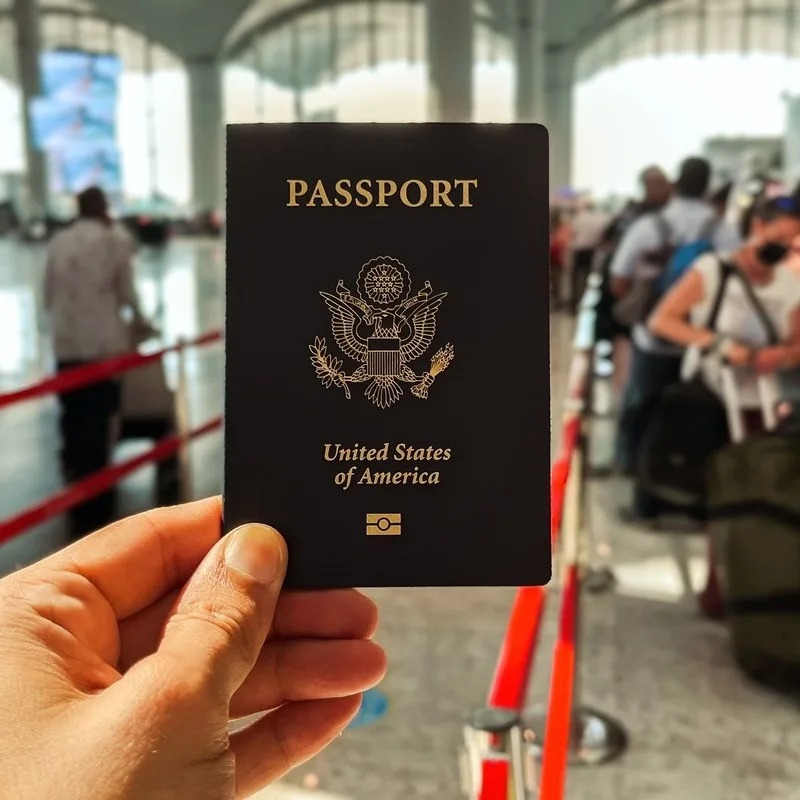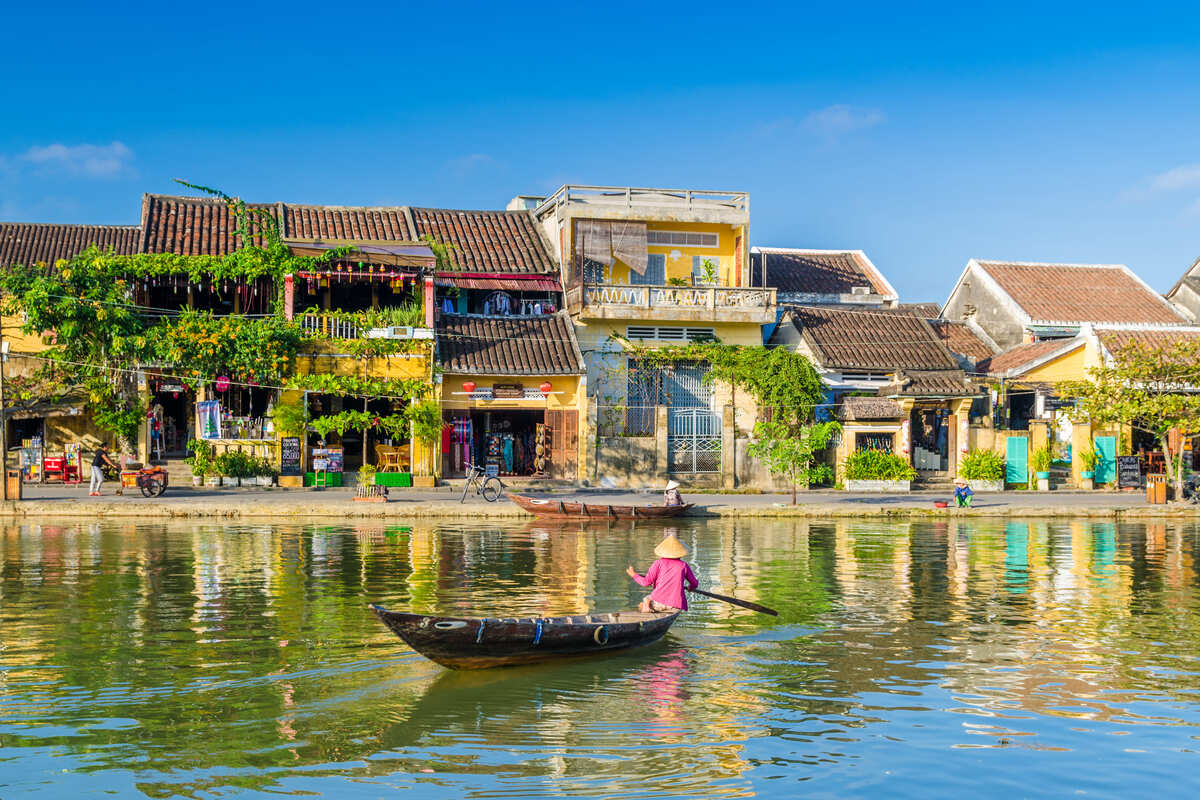[ad_1]
Last Updated
Few countries are as exciting and History-packed as Vietnam. One of Southeast Asia’s most underrated gems, it is not only the site of emblematic events that shaped the 20th century, but also a tropical oasis boasting an extensive coastline, a picturesque countryside, and breathtaking natural vistas.

Only a month ago, I flew to Vietnam with the goal of exploring its cultural diversity in depth, and visiting as many different provinces as I could, both North and South.
While I could probably write an entire book gushing over Vietnam and its abounding beauty, one small city in particular stole my heart.
Located in the country’s Central region, it is not only a major cultural center well-supplied with UNESCO-listed monuments, but perhaps Southeast Asia’s most surprising destination:
The Yellow City Of Vietnam

Hội An (commonly Latinized as Hoi An) is one of Vietnam’s oldest settlements, tracing its origins back to the 10th century, when it was established by the now-defunct Champa Empire as a trading port, at the strategic point where the Thu Bon River meets the East Sea.
Later on, its complex canal system would prove useful to Chinese and Japanese merchants, who saw in Hoi An an opportunity to expand their dominance across the historical Indochinese Peninsula.
In the 19th century, the French would also set up base here during their conquest of Vietnam.
Needless to say, Hoi An is a melting pot of sorts, and the countless foreign influences it was exposed to throughout the centuries, whether willingly or not, are still very much a part of the cityscape, coexisting harmoniously in a concoction of Buddhist temples and European colonial houses.
Top 5 Travel Insurance Plans For 2023 Starting At $10 Per Week
Easily Earn Points For Free Travel

The Old Town, where a majority of the World Heritage Sites are found, is famous for its yellow shopfronts, sitting on both sides of narrow alleyways teeming with traders and curious onlookers.
Cutting through its ochre-colored heart, a waterway busy with fishing boats helps paint a picturesque scene.
It is incredibly charming, so much so that it’s been named one of the world’s most beautiful cities, but there is more than meets the eye:
Temples Galore

If visiting an ancient Buddhist temple is on your Southeast Asia bucket list, you’ll be thrilled to learn Hoi An hosts an unusually high concentration of them, scattered all around the Old Town and beyond, each with defining architecture and an amazing History to match.
Some of the most famous ones include the Phu Kien Assembly Hall, with its large dragon-shaped fountain, the Hai Nam Assembly Temple, where visitors will find a gilded altar depicting heavenly scenes, the Quan Cong Temple, distinguished for a lively red color and decorative motifs, and my favorite out of them all: the Japanese Covered Bridge.

A footbridge housing a small temple, it was built by Japanese traders who established a permanent presence in Hoi An in the 16th century, and it’s now a major point of interest, attracting dozens of photographers who queue up by the riverbank for that signature postcard shot.
It is worth mentioning visitors must pay a symbolic entry fee of 120,000 VND, or USD$5, to enter Hoi An Old Town and explore its ochre-colored maze.
Incredible Cuisine

Vietnam was included in TasteAtlas‘ Top 20 World’s Best Cuisine ranking at number 20, outperforming other tried-and-true foodie destinations like Thailand and Malaysia, so it was hardly surprising I would stumble upon a foodie’s paradise arriving in Hoi An.
From sampling the unfamiliar street food to gorging on some delicious, homemade Pho in riverfront restaurants, every meal I had in Hoi An was an acute sensory experience, but writing this piece, somehow my thoughts keep gravitating towards one eatery in particular.
One of those places I was lucky enough to find just wandering at leisure in the Old Town, HOME Hoi An is tucked away in a quieter back street away from all the noise and trade that dominates the riverside, and a restaurant TripAdvisor-listed restaurant specializing in traditional Viet food.

Hoi An cuisine stands among Vietnam’s finest due to the city’s unique amalgamation of Western and Indochinese cultures, and the resident chef at HOME Hoi An did it justice.
Taking up on the waitress’ suggestion, I ordered some deep-fried prawn spring rolls for starters. Other than being deliciously crunchy, I particularly appreciated the way it was presented, resting on two baskets hanging from a mini Vietnamese carrying pole.
For the main, I wanted to keep it in the theme while still expanding on Hoi An’s rich seafood heritage, which seemed to be the restaurant’s main attraction. The seafood stir-fry was only a natural choice, with freshly caught prawn, pan-fried calamari, noddles, and a selection of locally-grown vegetables.
To wash it all down, and help me cool down from the 40-degree heat outside, some natural watermelon juice – no additives, just pure, iced, squeezed fruit.

My thirst for the tropical wasn’t yet entirely quenched, and although it was a tough pick between the homemade cassava tart with black pearl sago and the seasonal fruit platter, I went with the latter as I can’t seem to get enough of the lusciousness of the native fruit, particularly white-flesh pitayas.
It may not be as affordable as other cheap diners down the road, with some of the main courses costing as much as USD$30, but the cozy ambiance, the restaurant’s overall theme, paying homage to the Old Town’s warm color palette, and the English-speaking, incredibly attentive staff were absolute highlights for me.
HOME Hoi An is a multiple-story restaurant with plenty of room available, but you may want to call in advance and book a table not to miss out on this incredible experience, especially if you’re visiting Hoi An over a busy weekend.
Make your reservation here.
One Of The Most Beautiful Cities During The Nighttime

After spending over a month in Southeast Asia, I came to realize cities feel livelier and truly come to life in the nighttime, when the unforgiving sun has set, and people cram into the streets looking for that cooler breeze and some relief from that overbearing heat.
I had to become a bit of a night owl myself and hit town under the cover of darkness. Well, almost.
Hoi An is anything but quiet and dark in the late hours when the traditional paper lanterns light up in a million different colors, and the quirky cafes suddenly become bars packed with revelers.

Walking the riverbank after sundown, when the lantern boats are traversing the canals, trailed by their own colorful reflection on the pitch-black water of the Thu Bon River, pop music blasting through the loudspeakers in bars, and the smell of street food filling the humid air is magical.
If you’re visiting Hoi An in the coming months, make sure you’re there on time for June 1, July 1 and 31st, and August 29th, the next dates when the Full Moon Lantern Festival will be held.
Scenic Beaches

Hoi An is not primarily a beach destination, but it is close to the ocean, and visitors do have a handful of white-sand beaches within short driving distance of the Old Town to escape for an East Sea dip when the humidity gets a bit much.
Our top 3 picks include:
- An Bang, a tranquil sandy strip equipped with palapas and beachfront eateries
- Cua Dai, a beach and development zone where all the top-rated resorts are located
- Cham Island, an offshore swimming spot known for its virgin nature and bright-blue waters
If you’re dreaming of a Southeast Asia beach getaway, perhaps you should consider extending your stay beyond Hoi An and checking out the country’s mind-blowing South.
Unique Experiences

Besides hosting ornate temples and centuries-old shrines, Hoi An is a popular home base for travelers looking to explore the wider scenic Quang Nam countryside and immerse themselves in Central Vietnam’s distinct culture.
If you’re staying in Hoi An, you shouldn’t miss out on the chance to explore the Ba Na Hills reserve, featuring a landmark bridge arching over an area of outstanding natural beauty, supported by two giant, stone-like hands that look as if they’ve emerged from the jungle below.
Further up the coast, on the road to the bustling port city of Da Nang, the Marble Mountains make for yet another jaw-dropping nature escape, what with its otherworldly limestone caves, towering waterfalls, and winding footpaths.

If trekking isn’t your forte, and you’d rather explore and take in the local History, roughly 60km from Hoi An, you will find the Mỹ Sơn archaeological site.
A collective of Hindu structures built between the 4th and 14th centuries at the apex of Indianized Cham Empire, it is the longest-inhabited ancient settlement in mainland Southeast Asia in spite of its abandonment.
With numerous day trips to be considered, you would need a one-week stint in Hoi An to truly get a feel of the place, and the surrounding province.
Incredibly Affordable

Hoi An is one of the most affordable destinations in Southeast Asia, with everything from food prices to accommodation rates being markedly lower than in other neighboring markets, despite its rising popularity among foreigners.
It is, in essence, a backpacker destination, and the lower cost of living tends to reflect that:
- Rent is 25.2% cheaper than in Hanoi, the capital of Vietnam
- Restaurant prices are 36.2% lower than in Ho Chi Minh City, Vietnam’s biggest city
- Groceries prices are 17.5% than in Nha Trang, the country’s busiest resort destination
Hotel rates for upcoming June dates on Booking.com start at just USD$20 per night for a three-star hotel, while those for luxurious five-star properties range between US$50 when booked in advance in the off-season with a Genius discount and USD$181.
Vietnam Is Open For Tourism Restriction-Free

Unlike Indonesia or Myanmar, Vietnam welcomes tourists restriction-free, irrespective of COVID immunization status.
It was one of the first countries in Southeast Asia to reopen for tourism following the health crisis, welcoming foreigners restriction-free at a time when its neighbors were still limiting tourism in their bid to curb the viral spread, and it’s remained indisputably pro-tourism.
Traveling to Hoi An, or any other destination within Vietnam, all you’re required to bring is a valid passport and an entry visa unless you’re from a visa-exempt country.
U.S. and Canada passport holders are not exempt from this requirement and must obtain a visa prior to travel. Luckily, it can be applied for online, though advance planning is advised as it may take a few days to issue.
A 30-day tourist visa costs USD$25,00 and can be obtained here.
Read More:
Top 5 Travel Insurance Plans Starting At $10 Per Week
How To Easily Earn Points For Free Travel
↓ Join Our Community ↓
The Out Of Town Blogs Community FB group has all the latest reopening news, conversations, and Q&A’s happening daily!

SUBSCRIBE TO OUR LATEST POSTS
Enter your email address to subscribe to Out Of Town Blogs’s latest breaking travel news, straight to your inbox.
This article originally appeared on outoftownblogs.com
Opinions expressed here are the author’s alone, not those of any bank, credit card issuer, hotel, airline, or other entity. This content has not been reviewed, approved or otherwise endorsed by any of the entities included within the post.
[ad_2]
